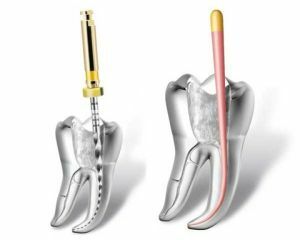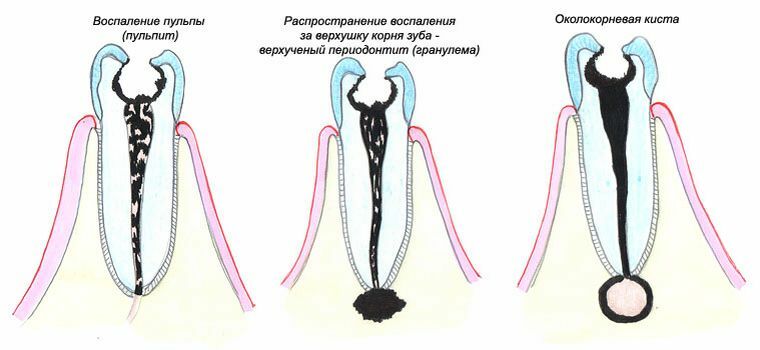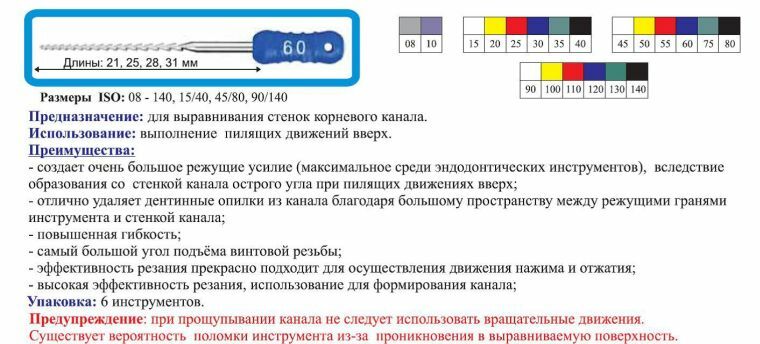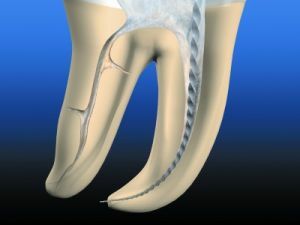 Endodontics - a profile direction in dentistry, based on the methods of treatment of the tooth canals. This is a fairly common area, including both standard depulpation, as well as complex restoration and cleaning of canals after unsuccessful treatment.
Endodontics - a profile direction in dentistry, based on the methods of treatment of the tooth canals. This is a fairly common area, including both standard depulpation, as well as complex restoration and cleaning of canals after unsuccessful treatment.
The dentist-therapist takes care of certain functions of the endodontist: for example, with all known cleaning of the hollow space inside the root, or, in a simple way, of removing the nerve.
Contents
- Specificity of endodontic treatment
- Objectives facing the endodontist
- Used toolkit
- Stages of treatment
- Cost of therapeutic procedures
Specificity of endodontic treatment
Ends of endodontics appeared in Ancient Rome and Greece. The doctors of that time tried to save patients from pain by curing the pulp( connective tissue inside the tooth) with a hot needle.
Modern endodontics is not conceivable without an X-ray machine or a dental viziograph. With their help, each stage of treatment is visually monitored. They allow you to see the real picture of the restoration of the tooth and, if necessary, plan and adjust the surgery.
Indications for endodontic treatment are:
- acute or chronic pulpitis;
- all forms of periodontitis - inflammation of the tissues around the tip of the root;
- inflammation and pain in the root of the tooth;
- severe tooth injury;
- preparation for prosthetics.
It is worth noting that dentists recommend the removal of pulp only in extreme cases. According to statistics, 97% of teeth successfully respond to endodontic treatment, and with the previous unsuccessful intervention - up to 87%.
Even in difficult cases, doctors try to resort to other methods of tooth preservation: resection of the apex of the root or its amputation, hemisection( restoration of the crown part with a pin) or re-implantation( return of the tooth to the alveolus while retaining the root cement).

The goals of an endodontist
A dentist specializing in the treatment of tooth canals is called an endodontist. This is one of the most prestigious specializations in dental practice. The endodontist should have a good command of not only therapeutic treatment, but also know the basics of prosthetics.
The doctor of this specialization has the following tasks:
- determining how necessary and successful the treatment will be;
- ensuring the sterility of tools and materials;
- separation of a diseased tooth from saliva during treatment with a latex shawl( cofferdam or rubberdam);
- qualitative removal of inflamed parts of pulp;
- elimination of pathogenic microorganisms inside the tooth;
- effective passage and expansion of dental canals;
- successful canal sealing;
- control the quality of recovery at each stage.
Used toolkit
Modern instruments for endodontic treatment must be both high-quality and inexpensive, since most of them are used only once.
Modern endodontics can not do without the following tools:
- pulp extractors : they extract pulp from the root canals;
- files : used to expand and prepare channels;
- channel fillers : fill the root gaps with filling material;
- tools introducing into the cavity various pastes and antiseptics ;
- plagers : used for sealing channels with gutta-percha;
- Gates drill : used to expand the channels.

Rasp for aligning the root canal
In addition, treatment of canals is impossible without a number of instruments:
- endodontic micromotors and tips : rotate instruments inside the channel;
- apekslokatorov : help to monitor the position of the instrument in the cavity and the length of the channels;
- electrophoresis, fluxoophoresis and ultrasound devices ( most often used Sonic);
- lasers, microscopes, X-ray machines and Visionographers .
Stages of treatment
Endodontic treatment is a multi-stage process that requires a lot of patience from the patient and a considerable amount of time. Treatment of canals is never done "in one sitting".Depending on the complexity of the specific case, the doctor will have to visit 3 times( with normal canal depulpation) to regular trips to the dentistry for several weeks, or even months.
Endodontic therapy includes several stages:
- X-ray examination, determination of the need for intervention, recovery options and drawing up of the
 treatment plan;
treatment plan; - local anesthesia, if the tooth was previously depopulated, and the patient does not experience pain, anesthesia is not used;
- carious cavity opening and channel search;
- removal of affected pulp;
- creating access to channels;
- cleaning, extension of the root cavity, determination of the length and passage of channels;
- removal of inflamed tissues, elimination of pathogenic microflora and disinfection of canals;
- drying channels;
- sealing of the root cavity with gutta-percha;
- restoration of the upper part of the tooth with the help of a filling material, with a pin or prosthesis.
Each treatment step is necessarily controlled by X-ray. Even with the usual removal of the nerve, at least three pictures are taken: before surgery, after depopulation and control before restoration of the outer part of the tooth
The cost of the therapeutic procedures
 Endodontics, perhaps, can be called the most unpredictable area of dentistry, so if the initial depulence of the tooth can determine approximate pricesfor services and treatment time, in cases of recovery from previously poorly treated canals or tooth dislocation, it is not always possible to accurately predict even the success rateь restoration.
Endodontics, perhaps, can be called the most unpredictable area of dentistry, so if the initial depulence of the tooth can determine approximate pricesfor services and treatment time, in cases of recovery from previously poorly treated canals or tooth dislocation, it is not always possible to accurately predict even the success rateь restoration.
Endodontic treatment is expensive, regardless of the dental center. This is due to the complexity of therapy and the use of expensive tools and drugs. Prices for tooth restoration by this method will differ not only in each area, but also in a specific clinic.
Also the cost of treatment depends on:
- the number of channels;
- neglect of the tooth;
- presence or absence of previous treatment;
- inflammatory processes.
Prices for endodontic treatment start from 10 thousand in regional centers and reach 50 thousand in large cities.
When choosing a clinic you should focus not only on the cost of therapy, but also on the quality of the equipment, the professionalism of doctors and the reputation of the clinic.
In Moscow, clinics that practice endodontic treatment are:
